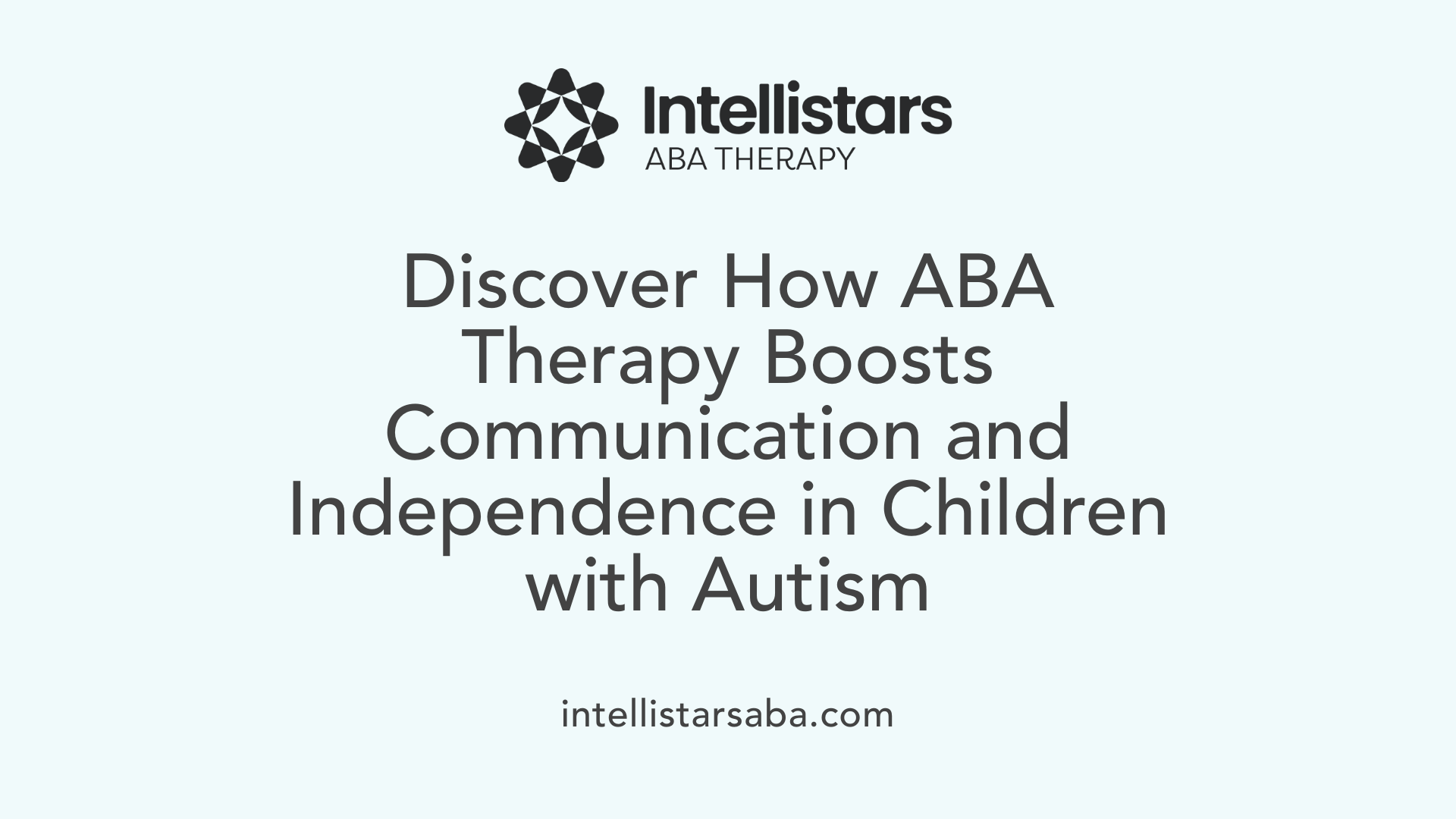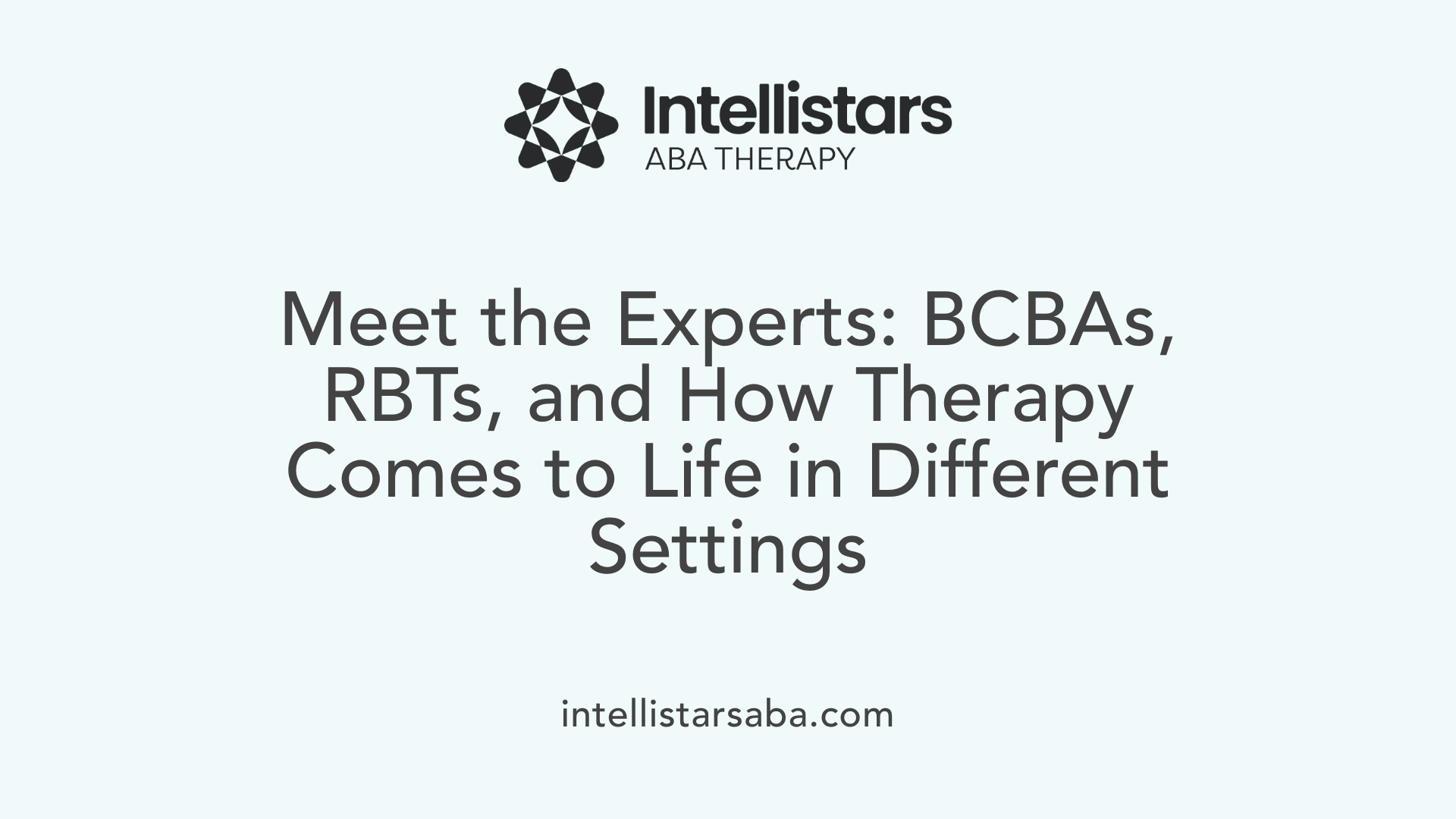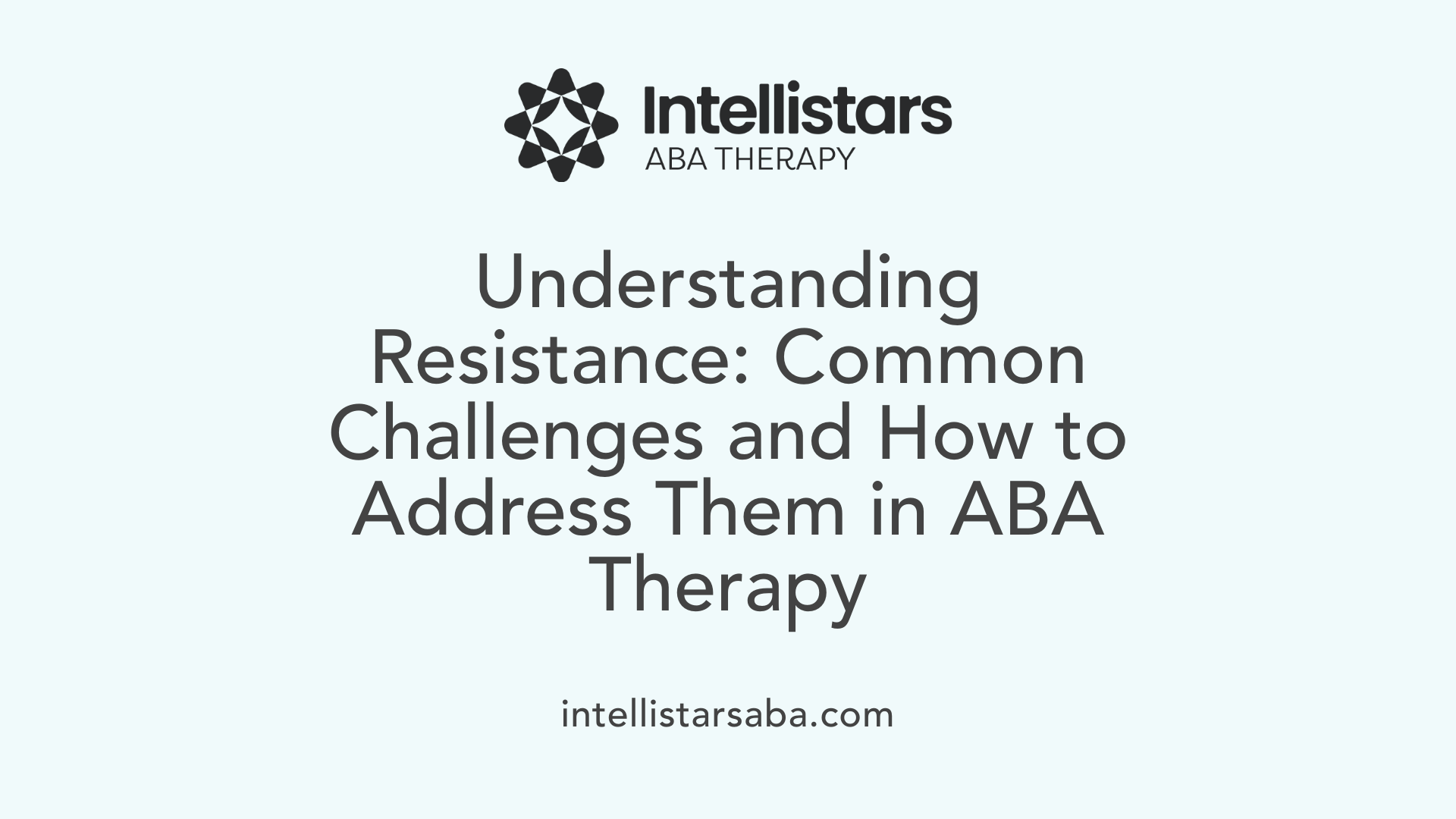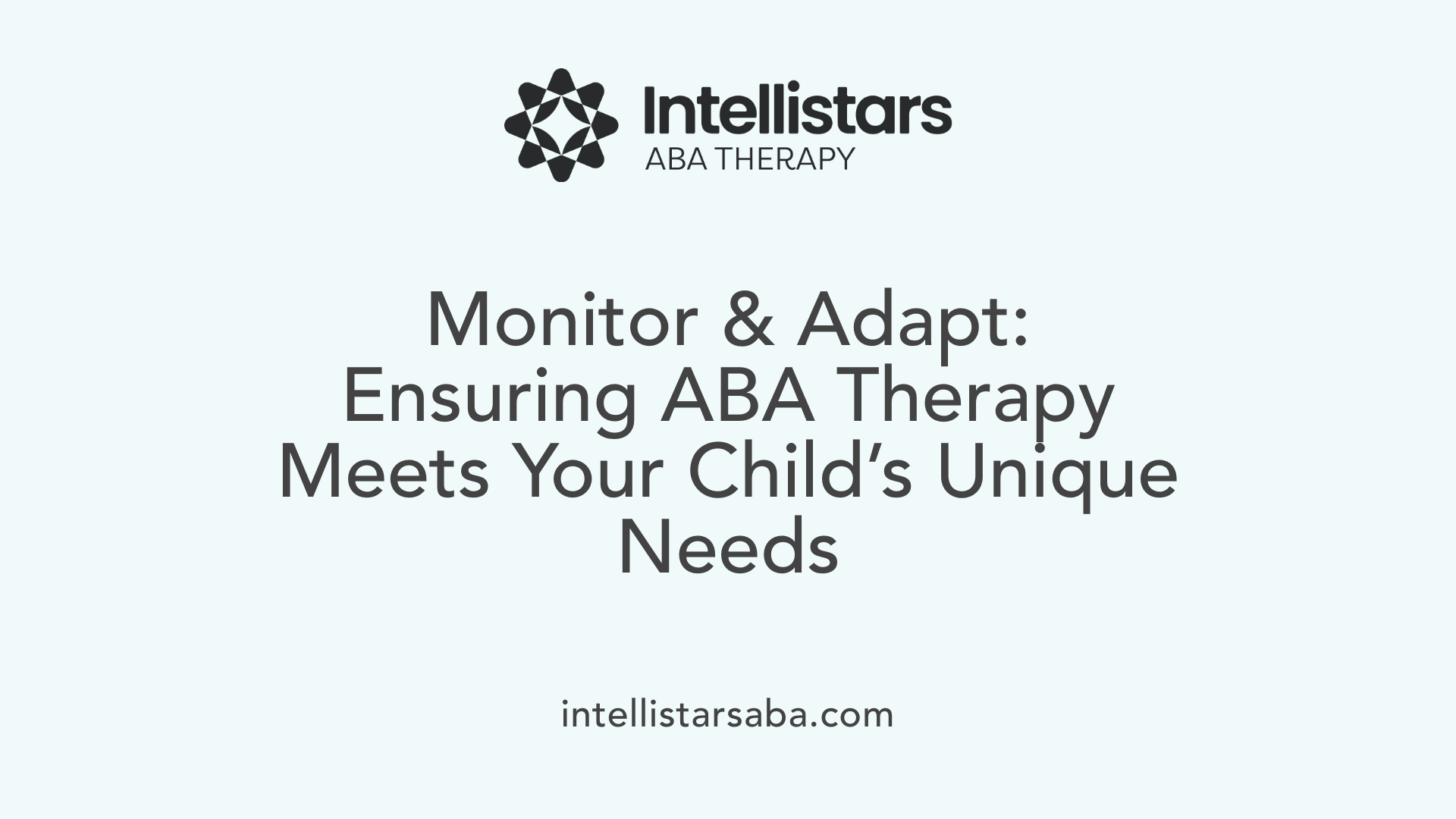Understanding ABA Therapy and the Nature of Resistance
Applied Behavior Analysis (ABA) therapy is widely recognized as an effective, scientifically validated approach to support children with autism spectrum disorder (ASD). Despite its benefits, many families encounter resistance from their children during therapy sessions. Understanding what ABA entails and why resistance occurs is essential for parents seeking to foster cooperation and progress in their child's treatment journey.
What is ABA Therapy and How Does It Benefit Children with Autism?

What is Applied Behavior Analysis (ABA) therapy and how is it used in autism treatment?
Applied Behavior Analysis (ABA) therapy is a scientifically supported method designed to improve functional skills and reduce challenging behaviors, particularly in children with autism spectrum disorder (ASD). This approach uses learning principles and behavioral strategies like positive reinforcement, prompting, and careful analysis of antecedents and consequences (the 'A-B-C' model).
Therapy is highly individualized, starting with an in-depth assessment conducted by a Board-Certified Behavior Analyst (BCBA). This evaluation identifies the child’s unique abilities and challenges, allowing the development of tailored treatment plans. These plans often target key skill areas such as communication, social interaction, daily living skills, and reduction of problem behaviors.
What are the goals and approach of ABA therapy?
ABA therapy aims to promote greater independence and improve quality of life by building on the child’s strengths. Sessions for toddlers typically mix structured methods like discrete trial training with naturalistic teaching embedded in play and routines. The therapy plan includes gradually increasing demands, while keeping activities fun and engaging, often through play-based sessions.
How does ABA use positive reinforcement?
Positive reinforcement plays a central role in ABA therapy. Preferred toys, snacks, praise, and engaging activities motivate children to participate and learn new skills. Reinforcement fosters trust and reduces resistance, making therapy a rewarding experience rather than a stressful one.
How are treatment plans individualized?
Each child’s journey is unique. BCBAs use ongoing data collection to track progress and adjust plans to the child’s evolving needs. Family involvement is critical, with parents receiving coaching and resources to support skill generalization at home and other environments.
What benefits does ABA therapy bring to children with autism?
ABA therapy has proven effective in increasing communication, improving social skills, and teaching essential daily living habits. It also helps reduce challenging behaviors by teaching replacement skills and managing triggers carefully. Implemented consistently with collaboration among therapists, caregivers, and medical providers, ABA supports children in reaching their full potential with respect for their individuality and sensory needs.
Who Provides ABA Therapy and How is It Delivered?

Roles of BCBAs and Therapists
ABA therapy is primarily provided by Board Certified Behavior Analysts (BCBAs) and licensed therapists who specialize in behavioral interventions. BCBAs conduct detailed assessments, such as Functional Behavior Assessments (FBA), to identify the child's specific needs and design an individualized treatment plan. They oversee the therapy, monitor progress through data analysis, and adjust strategies as necessary to optimize outcomes.
Role of Registered Behavior Technicians (RBTs)
Registered Behavior Technicians (RBTs) implement daily therapy sessions based on the plans set by BCBAs. They work directly with children during structured and play-based activities, using positive reinforcement to teach communication, social, and daily living skills. RBTs observe the child’s responses closely and gather data to share with the BCBA.
Settings for Therapy Delivery
Therapy can be delivered in multiple environments such as the child’s home, school, or community settings. This approach promotes generalization of skills across different situations, which is crucial for meaningful progress. Adjusting the environment, like reducing sensory overload and incorporating the child’s interests, improves engagement.
Importance of Individualized Assessments and Data-Driven Monitoring
Initial assessments by BCBAs are essential for understanding the child's strengths and challenges. Progress is tracked consistently through data collection, enabling practitioners to tailor interventions effectively. Regular reassessment of behavior triggers and reinforcements ensures that therapy remains responsive to the child’s evolving needs.
Collaboration with Families and Multidisciplinary Teams
Collaborating closely with families is vital. Parent training and real-time updates empower caregivers to reinforce learned behaviors at home, increasing consistency. Additionally, partnering with multidisciplinary teams—such as medical providers and educators—supports a holistic approach addressing all aspects of the child's development and well-being.
Understanding Why Children Resist ABA Therapy Sessions

Common Reasons for Resistance
Children often resist ABA therapy sessions due to a variety of factors. Resistance is a normal response, especially when they perceive activities as overwhelming or unfamiliar. Unpersonalized approaches or environments that feel intimidating can amplify this reluctance.
Overwhelm from Unfamiliar or Demanding Tasks
ABA therapy involves structured activities which might feel too demanding initially. Starting with short, low-demand tasks and gradually increasing expectations helps ease children into the process. This gradual transition reduces feelings of overwhelm.
Effects of Unpersonalized or Fear-Based Environments
Therapy settings that lack personalization or feel threatening can discourage participation. Negative or fear-based environments may create stress rather than comfort, resulting in avoidance behaviors during sessions.
Role of Sensory Overload
Many children with autism experience sensory sensitivity. Therapy environments that are noisy, bright, or otherwise overwhelming can trigger resistance. Adjusting the setting by incorporating the child’s interests and minimizing sensory overload improves engagement.
Challenges Related to Communication Gaps Between Therapists and Caregivers
Poor communication between therapists and parents or caregivers can lead to inconsistencies and misunderstandings. Without collaboration and regular updates, children may feel confused or unsupported, increasing their resistance.
Overall, resistance in ABA therapy is a common hurdle that can be addressed by creating personalized, supportive, and well-communicated approaches tailored to each child's needs.
Effective Strategies to Reduce Resistance and Foster Cooperation

How can building rapport through preferred activities help reduce resistance?
Starting ABA therapy by engaging children in activities they enjoy helps to build trust and comfort. This approach eases initial reluctance by making the therapy environment less intimidating and more familiar. When children feel understood and valued through their interests, they are more likely to cooperate and participate willingly.
Why is the use of positive reinforcement with favored toys and snacks important?
Positive reinforcement is a cornerstone of ABA therapy. Offering preferred toys, snacks, or verbal praise motivates children to engage in sessions. Reinforcements increase the likelihood of desirable behaviors and reduce resistance by making participation rewarding rather than stressful.
How does making sessions fun and play-based influence therapy cooperation?
Incorporating play into therapy sessions transforms challenging tasks into enjoyable activities. Play-based techniques help children view therapy in a positive light, increasing engagement and lowering reluctance. This approach also aligns with young children's natural ways of learning, enhancing skill acquisition.
What role do gradual transitions with low-demand tasks play?
Introducing therapy demands slowly, starting with short, simple tasks, allows children to adapt without becoming overwhelmed. Gradual increases in expectations support sustained attention and reduce frustration, enabling children to build confidence and cooperation over time.
How can adjusting the therapy environment reduce sensory overload?
Optimizing the therapy setting by minimizing sensory distractions and including the child's interests creates a calmer and more inviting atmosphere. A controlled environment helps children focus and feel secure, which diminishes resistance and facilitates smoother session flow.
Addressing Challenging Behaviors During Therapy
Identifying triggers using Functional Behavior Assessment (FBA)
A Functional Behavior Assessment (FBA) is an essential tool in understanding the root causes of challenging behaviors in children undergoing ABA therapy. By carefully observing and analyzing the environment and context in which behaviors occur, the FBA helps identify specific triggers and reinforcements maintaining those behaviors. This insight guides therapists in developing targeted intervention strategies tailored to each child’s needs.
Antecedent interventions such as environmental modifications and visual supports
Preventing challenging behaviors starts with modifying antecedents—the events or conditions that occur before the behavior. Strategies include adjusting the therapy environment to minimize sensory overload, incorporating the child’s interests, and providing clear visual supports such as schedules or choice boards. These modifications reduce triggers that can provoke frustration or aggression and create a more supportive and predictable atmosphere for the child.
Teaching replacement behaviors via Functional Communication Training (FCT)
Instead of simply discouraging problematic behaviors, therapists teach children alternative, appropriate ways to express their needs through Functional Communication Training (FCT). This might involve teaching the child to request breaks, express discomfort, or ask for help using gestures, picture exchanges, or speech. Additional skills like social interactions and coping mechanisms are also emphasized to equip children with positive options that serve the same function as the challenging behaviors.
Use of positive reinforcement and other consequence strategies to manage behavior
Managing behavior in ABA therapy heavily relies on positive reinforcement—rewarding desirable behaviors to increase their occurrence. Other consequence-based strategies include extinction (withholding reinforcement for unwanted behavior), response cost (removing a preferred item following behavior), and time-out techniques. These tools, combined with consistent application and ongoing data monitoring, support reducing challenging behaviors effectively while encouraging positive communication and social skills.
The Critical Role of Parental Involvement and Collaboration
Why Are Parent Training and Resources Important in ABA Therapy?
Effective ABA therapy extends beyond the clinical setting, making parent training and resources essential. Parents equipped with knowledge and skills can reinforce therapeutic techniques at home, promoting consistency and improving outcomes.
How Does Consistency Through Reinforcement at Home Affect Progress?
Consistency in reinforcement strategies, like praising or rewarding desired behaviors, helps maintain skill gains made during therapy sessions. When parents apply similar reinforcers—such as favorite toys, snacks, or verbal praise—children receive steady motivation, reducing resistance and encouraging participation.
What Is the Importance of Collaboration and Communication Among Caregivers, Therapists, and Multidisciplinary Teams?
Open lines of communication foster unified approaches and allow for timely adjustments. Collaboration among therapists, caregivers, and other specialists ensures that interventions are well-coordinated and tailored to the child’s evolving needs. This multidisciplinary teamwork supports holistic development and effective behavior management.
How Do Family Coaching and Real-Time Progress Updates Support Therapy?
Family coaching provides parents with ongoing guidance and problem-solving strategies, empowering them as active partners in treatment. Real-time progress updates keep families informed and engaged, enabling shared decision-making and reinforcing a team approach to the child’s growth.
Together, these parental involvement strategies create a strong foundation for ABA therapy’s success, enabling children to generalize skills and thrive across settings.
Tracking Progress and Adapting Therapy to Meet Your Child’s Needs

Regular data collection and monitoring
Consistent data collection during ABA sessions allows therapists to track small improvements and identify areas needing adjustment. This ongoing monitoring supports data-driven decision-making, ensuring therapy remains effective and responsive to your child’s progress.
Adjusting pace and structure of sessions
Therapy sessions can be tailored to prevent sensory overload by incorporating shorter durations and play-based activities. Gradual increases in task demands help children adapt comfortably, reducing resistance and maintaining engagement.
Personalized, trauma-informed, and neurodiversity-affirming practices
ABA approaches that embrace neurodiversity and consider individual sensory preferences foster a trusting environment. Tailoring goals to the child’s strengths and interests increases motivation and promotes positive experiences.
Holistic support through multidisciplinary collaboration
Collaboration among Board-Certified Behavior Analysts, therapists, caregivers, and other healthcare providers ensures a comprehensive approach. This teamwork addresses medical, developmental, and behavioral needs to support overall well-being.
Optimizing therapy plans based on strengths, interests, and sensory needs
Incorporating a child’s favorite toys, snacks, and activities into therapy sessions enhances engagement. Adjustments to the environment to minimize sensory overload also contribute to more positive and successful therapy outcomes.
Moving Forward with Confidence and Compassion
Resistance during ABA therapy sessions is a common challenge but one that can be effectively addressed through understanding, patience, and informed strategies. By learning about the nature and benefits of ABA, fostering trust and motivation, managing challenging behaviors thoughtfully, and emphasizing strong collaboration between families and therapists, parents can create an environment where their child feels supported and engaged. Continuous monitoring and personalized adjustments ensure therapy evolves to meet the child's unique needs, maximizing growth and quality of life. Ultimately, navigating resistance is part of a rewarding journey toward helping your child thrive.
References
- Common ABA Therapy Challenges
- ABA Therapy Not Working? 7 Expert Solutions to Try
- Reducing Aggressive Behavior in Children with Autism ...
- ABA Therapy for Toddlers: Essential Early Intervention Guide
- Applied Behavior Analysis (ABA)
- Applied Behavior Analysis (ABA)
- 6 Benefits of ABA Therapy for Children with Autism
- Applied Behavior Analysis (ABA)
- Applied Behavior Analysis (ABA)
- The Controversy Around ABA






